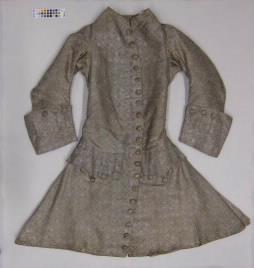FOR IMMEDIATE RELEASE
ACS News Service Weekly PressPac: October 12, 2011
First practical scientific test to date and authenticate priceless silk masterpieces
“Dating Silk By Capillary Electrophoresis Mass Spectrometry”
Analytical Chemistry
Scientists are reporting development of the first fast and reliable scientific method to determine the age and authenticity of priceless silk tapestries and other treasures — such as Civil War General Phillip Sheridan’s famous red-and-white battle flag — in museums and other collections around the world. A report on their work appears in ACS’ journal Analytical Chemistry.
Mehdi Moini and colleagues at the Smithsonian Institution point out that for thousands of years, silk fibers, consisting of natural protein unwound from the cocoons of the silkworm, have been woven into not just garments, but wall hangings, tapestries, carpets and painted silk artworks. Until now, however, there has been no practical scientific way to tell whether a silk tapestry is a well-preserved example from the Fontainebleu series from the 1540s or a copy made just last week. In many cases, scientists could not use the familiar carbon-14 dating process, because it involves taking samples of material large enough to cause visible damage to the silk object.
Their solution is a new test that tracks time-related deterioration the amino acid building blocks in silk protein. As silk ages, the so-called L-amino acids in its protein changed into so-called D-amino acids. The D/L ratio provides a highly accurate measure of a silk object’s age, age to within 50-100 years and whether it is deteriorating and needs conservation work. Archaeologists had used the D/L approach to date ancient teeth and bone, but Moini’s team simplified it and adapted it for silk. The researchers demonstrated the test, called “CE-MS,” on Sheridan’s flag, a Fontainebleu tapestry, ancient silks from China and other old samples from masterpieces in museums around the world. The method only takes 20 minutes and requires only microscopic samples of silk — a major improvement over the familiar carbon-14 dating method, which requires large samples that may cause visible damage to the object.
![]()

Contact
Science Inquiries: Michael Woods, Editor, 202-872-6293
General Inquiries: Michael Bernstein, 202-872-6042


